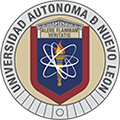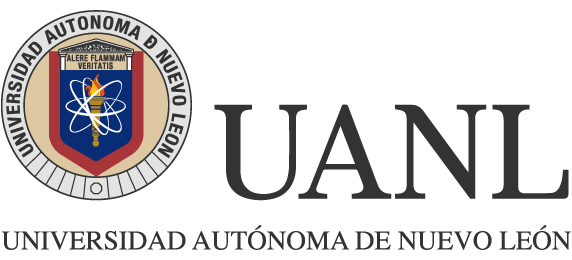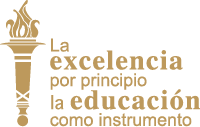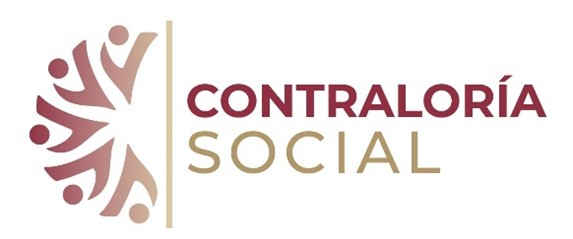Share:
History
The Universidad Autonoma de Nuevo Leon was officially founded in 1933, although its origins are older with the schools of Law, Medicine and Pharmacy, Escuela Normal, and Colegio Civil which were established before that time. These were key principles for the foundation of the institution which took place on September, 25th, 1933 with a total of 1,862 students and 218 professors.
At its inception, this university’s name was Universidad de Nuevo Leon, now U.A.N.L. stands for Universidad Autonoma de Nuevo Leon. The Maximum Academic Institution in the State originally consisted of the Schools of Law and Social Sciences, Medicine, Engineering, Chemistry, and Pharmacy, along with Escuela Normal, Escuela Industrial “Alvaro Obregón”, Technical High School “Pablo Livas”, Industrial High School of Women Labors “Pablo Livas”, and the School of Nursery and Obstetrics.
Read more about UANL’s history or view a historical timeline
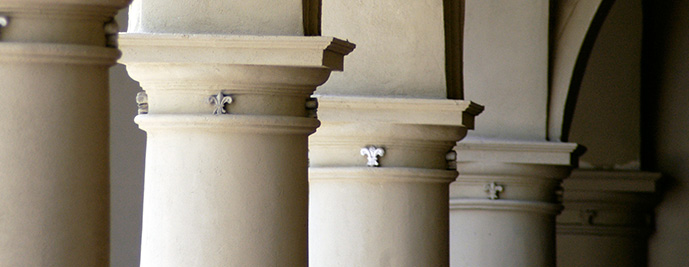
Born in Colegio Civil
The present Universidad Autonoma de Nuevo Leon is the result of a legacy of three fundamental historical processes in the life of the country: the Independence of 1821, the Reform of 1857, and the Revolution of 1910.
The educational institution was founded in 1933 based on the School of Law that emerged in 1824 in the classrooms of the Seminary College of Monterrey according to the decree of the Sovereign Constituent Congress of October 13, 1823. This gave authority to the nation’s colleges that did not have it, “to establish chairs of Natural, Civil and Canon Law, and to confer the minor degrees.
This civil regulation was applied in an ecclesiastical institution because it was the only institution of higher education that existed in northeastern Mexico. In this way, a measure of the independent Mexican regime, such as the creation of a professional career, was linked to another of the former Spanish Crown, such as the Seminary, whose foundation was encouraged by the royal decrees of Charles III in August 1768.
Finally, the School of Nurses in 1915 and the industrial schools “Pablo Livas” in 1922 and “Álvaro Obregón” in 1930, were the creation of the revolutionary governments. They were promoted by individuals, most of whom emerged from the armed conflict of 1910. The foundation of the University of Nuevo Leon was the corollary of this process in which national education was a fundamental element in the reconstruction and definition of the new post-revolutionary Mexican State.
The trigger was the project of regionalization of higher education undertaken in 1921 by the Secretary of Public Education headed by José Vasconcelos. That year, an important representation of the Monterrey society formed by businessmen, professionals, and teachers presented the initiative to establish in Monterrey one of the four universities that the Federation intended to create in the nation. However, the establishment of the Universidad Autónoma del Noreste was postponed due to the political, social, and economic instability faced by the state government in the 1920s.
The project could be resumed until the Sonora group was in power. Governor Aarón Sáenz Garza prepared the conditions for the administration of Francisco A. Cárdenas to undertake its creation. He enacted a new Law of Public Instruction that established university education within the educational system and, on the other hand, he arranged with the Secretary of Public Education, Narciso Bassols, a commissioner in charge of the preliminary tasks of the organization of the University of Nuevo Leon.
At the same time, youth from the urban middle class, organized in guilds of the schools of Law, Medicine, Colegio Civil, Normal Superior, and Pharmacy, joined the campaign for their organization. These had as leaders those who participated in the student magazines and newspapers, in Grupo Renovación, in student societies, and in the Student Federation of Nuevo Leon.
Yet this situation was a consequence of the political polarization of the population, which was divided between conservative groups far removed from a revolutionary commitment and liberals or progressives linked to the policies of the government of the so-called Maximato, in other words, the government dominated by General Plutarco Elías Calles.
Universidad de Nuevo Leon is born.
For this reason, when Pedro de Alba was commissioned by the Ministry of Public Education (SEP), his task was not only executive but also political, as he established a balance in the University Organizing Committee of the various forces at work in the state, as well as in the composition of the first University Council. In the first instance, it brought together representatives of students, professionals, government, business, banking, the press and various social and professional organizations. Thus, the University became a collective initiative.
However, Vasconcelos supporters were not included in the process, who promoted the establishment of the institution. Rangel, Alvarado and Elizondo, either by involuntary omission or by deliberate exclusion of the authorities.
On May 31, 1933, one of the essential works of the Organizing Committee culminated with the promulgation of the first Organic Law of the Universidad de Nuevo Leon, a public service institution destined “to procure the integral education of man on a plane of absolute equality and in a fair balance of forces, values and activities”, according to the objective stated in its first article. It did not propose institutional autonomy -nor limited as the UNAM’s- and placed as the center of political power the University Council with the attributions of naming their President and directors, according to chapters V and VII of article 9, respectively, and article 15.
However, the legal character that the law granted to the University was established with a broad approach of freedom in terms of its technical, doctrinal, and teaching procedures. The main purpose of independence is to free the University from political, electoral, and bureaucratic influences, transitory contingencies, and foreign pressures. Consequently, professors, officials and authorities of the University will have the guarantees and stability to spend all their time studying, teaching or researching, without the threat of losing their jobs without reason”.
On September 25, 1933, its courses began in four colleges and six schools whose classrooms received 197 undergraduate students and 1,229 high school students. The institution included Medicine, Law, and Social Sciences, as well as the Normal School, Colegio Civil (transformed into the Escuela de Bachilleres), the Pablo Livas, and Álvaro Obregón industrial schools. Technical high school was established to serve as a bridge to the engineering career, and Nursing and Obstetrics.
The University was born at the same time as technical and scientific developments that were in progress in the third decade of the twentieth century. The schools of Engineering, Chemistry, and Pharmacy based their programs on the new knowledge that UNAM students were learning. In this way, they transformed curricula, academic deficiencies, and the almost militarized school discipline, one of the aspirations for which Vasconcelos supporters strived.
The original conception of establishing La Universidad del Norte did not succeed due to the lack of support from neighboring states, in considerable part due to the effects of the economic crisis of 1929. And although Nuevo Leon covered its full costs since the federal government did not allocate any subsidy, in fact, it was born as a regional university by receiving students from neighboring states.
Students and graduates of the University were directly involved in the modernization of industry and the countryside. They also worked in the transformation of infrastructure throughout the country, the expansion of health services and, generally, in the development of society. For this reason, Genaro Salinas Quiroga considers that the founding of this University should be considered an extraordinary event in the 20th century, and José Emilio Amores went even further by describing it as the most important event of the 20th century in the region.
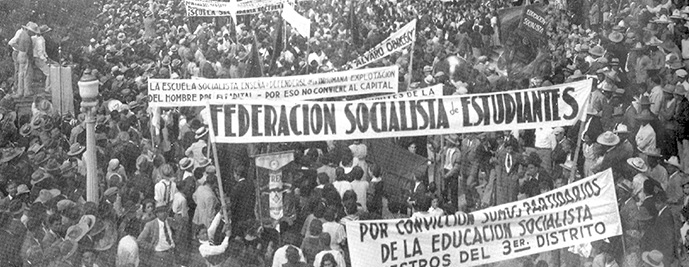
An Institution with social commitment.
The relationship between the revolutionary State and the University came into conflict every time the balance of power shifted. Although its Organic Law postulated it, the institution could not escape from the prevailing political situation. The federal government’s project to base education on the doctrine of scientific socialism meant for the nascent educational institution a stage of reform and change of orientation, a factor that influenced the removal of Governor Francisco A. Cárdenas from his office.
Martínez Villarreal commented: “The Marxist approach of the University aims to create the concept of social solidarity, replacing the previous concept of culture in terms of behavior and those of competence and profit with those of cooperation and social service”.
While the reform was political, it was also true that there was a common agreement in some sectors regarding the fact that the educational task should be based on the ideology, postulates, and orientations of the Mexican Revolution. In other words, it should have a social orientation, even though this implied threatening the principle of academic freedom. Those who supported the maintenance of academic freedom and education open to all horizons of thought were able to gain strength and organize an energetic reaction by proposing a strike with important political and social repercussions, which began on September 17, 1934.
On September 28, 1934, the crisis was finally resolved by the state authorities. Through the dissolution of the University and the creation of the Organizing Commission of the Socialist University, chaired by Martínez Villarreal, and the Federation of Socialist Students (FES). Although the draft law for the new university was completed, it was not approved and the commission was dissolved.
In order to give continuity to this project, Governor Quiroga gave way to the creation of the Consejo de Cultura Superior, on September 7, 1935, a legal figure that served as a coordination of schools and faculties in charge of the functions of the extinct University. The progressive elements in common action with the government displaced the most conservative or reactionary elements in the control of both the University Council and the chairs; the hegemony of this political group in the University meant the defeat of that sector, and this rupture of the “just balance of forces” would give rise, years later, to new confrontations
The Industrial Chemistry and Pharmaceutical Chemistry and Biology degrees were opened (1936); the School of Music was founded, supported by the municipality of Monterrey, and the School of Dentistry (1939) with the degree of Dental Surgeon, having incorporated a year earlier the School of Commerce with the degree of Private Accountant.
For eight years, Consejo de Cultura Superior directed the higher technical and professional studies in the state and the progress of its schools under the direction of a directorate presided successively by Martínez Villarreal (1934 – 1935), the provisional governor Gregorio Morales Sánchez (1935 – 1936) and Enrique C. Livas (1936 – 1948). However, it is necessary to qualify the characteristics of the period. It can be said in general terms that the socialist tendency was emphasized and defended by students, teachers, and authorities, but these were vociferous expressions to openly show an approach in accordance with the mandates of the central power, but this does not mean that historical materialism was the basis of university teaching. In any case, the socialist tendency was attenuated to avoid internal problems such as struggles for the control of student representation and externally to temper the political environment and the concern of other sectors of the society of Monterrey, especially the business community.
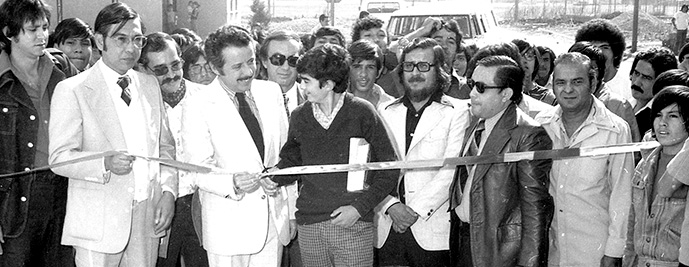
Awakening to an intense scientific and cultural movement
The transformation process that arose from the modernizing policy in higher education under the administration of President Manuel Avila Camacho, was initiated on December 1, 1940. This policy included academic freedom as one of its postulates and led to two fundamental ideas: the re-establishment of Universidad de Nuevo Leon and the creation of Ciudad Universitaria (University Campus).
By then, as mentioned, the notion of socialist education had been diluted. In fact, in 1941 the Federation of University Students of Nuevo Leon (FEUN) was constituted instead of the Federation of Socialist Students (FES), and, with it, the socialist principle disappeared from the scene to give new characteristics to the development of the Institution.
In this new exercise of balance, new departments were created in order to give them spaces of action from where to promote intellectual and cultural activities. Rangel promoted, through the Department of University Social Action, the creation in 1944 of the Musical Culture, University Theater, Painting, and Drawing, and Radio sections in charge of teachers Josémaría Luján, Miguel D. Martínez Rendón, Ignacio Martínez Rendón, and Pedro Garfias, respectively; the publication of the magazines Armas y Letras and Universidad, which were important vehicles for cultural dissemination; the program Hora Universitaria, broadcast by XEFB, the annual activities of the Summer School, starting in July 1946, under the direction of Francisco M. Zertuche, and the Plastic Arts Workshop in 1948.
The climate of conciliation and stability within the University favored achievements such as a small, but finally, expansion of the educational offer, construction of school buildings, including the construction of new and modern buildings for the faculties of Chemical Sciences and Medicine, and reforms to the study plans, was soon broken for reasons beyond the Institution’s control. The University was involved in an ideological struggle imposed from the outside through student segments grouped in the so-called Newleonesa Union of University Students (UNEU), who, on October 6, 1948, started a strike demanding the separation of the rector; they also took and damaged the facilities of the Civil College as a measure of pressure until they achieved their goal on December 4 of that year, when Livas was removed from his office.
The footprint of Raul Rangel Frias
The 1948 onslaught of political origin revealed once again that university conflicts were not only those arising internally but between the University and the political and social system of which it was a fundamental part. It was true that the University was endowed with the full legal capacity to carry out its purposes, but it was also true that as a public and social institution, its existence and terms were inseparable from the State, an aspect that would become a crisis years later.
In the meantime, as a result of the 1948 process, the balance of the “just balance of forces” shifted again at the University by determining the displacement of the “continuity” represented by Enrique C. Livas as the central figure of the progressive elements and the installation of others more identified with the context of the industrial and financial life of the prosperous city of Monterrey.
As a result of these new bonds of understanding, an advisory council was established with representation from the commercial, industrial, professional, and middle-class sectors, and the University Board of Patrons was born on December 11, 1950, within the framework of an official decree number 66 of the government of Nuevo Leon, a legal figure conceived with autonomy with respect to the educational institution, dedicated to providing support to provide it with the necessary resources, mainly economic, to fulfill its purposes through mechanisms such as “Sorteo de la Siembra Cultural”.
In the academic field, the Schools of Philosophy and Literature (1950) were born, following preparatory courses in humanities that included Greek and Latin as classical languages and French as a modern language, literature, and philosophy; Commerce and Administration (1952), which offered courses in Auditing and Public Accounting; Physical-Mathematical Sciences (1953), Biological Sciences (1952) and Agronomy (1954), the latter as a result of the efforts of Eduardo Aguirre Pequeño; and Economics (1957), as well as the Escuela de Bachilleres in the municipality of Linares (1953). The current building of the School of Medicine was concluded, to which the Civil Hospital was integrated by decree of June 2, 1952, acquiring the character of a University, consolidating the ideal of the clinical practices of the students in the hospital-school binomial. The Casa de Enfermeras building was annexed to the hospital. At the same time, the Institute of Social Workers was incorporated to the University (1952) and the Center for Humanistic Studies and the Center for Economic Research were created.
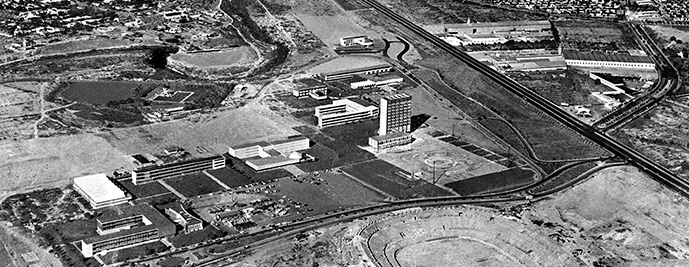
The desire for the Campus was expressed by Rangel Frías in 1954 in his historic speech before President Adolfo Ruiz Cortines: “We intend to demarcate a space where the physical qualities of the land and the capacity of the buildings will favor the development of culture and work”.
With the impulse of Rangel Frías -first as rector and since 1955 as governor-, supported by the rectors Roberto Treviño González and Joaquín A. Mora, the University Board of Trustees, and the support of students, professors, and society in general, one hundred hectares of land in Military Field No. 2, located on the northern border of Monterrey and San Nicolás de los Garza, were obtained in the first instance, not without vicissitudes, through the decree of February 18, 1957, by President Adolfo Ruiz Cortines.
Si bien se contó con la colaboración federal en el diseño del conjunto, la Universidad tuvo capacidad propia para elaborar por si misma el trazado universitario, creando una oficina técnica que resolvió el problema del planteamiento urbanístico y el diseño arquitectónico de los edificios bajo una corriente moderna. Una vez cedido el predio se construyeron uno tras otro los edificios de las distintas facultades de la Universidad, materializando conceptos importados de otras universidades, especialmente norteamericanas, cuya influencia se recibió a través de la Ciudad Universitaria de la UNAM del Pedregal de San Ángel. Este sistema concentrado estableció áreas específicas para las distintas disciplinas, además de integrar dentro de un ámbito especial otras actividades como las cívicas y deportivas con campos de futbol y béisbol, pistas de atletismo y alberca olímpica.
In the first stage, the buildings for the Schools of Law and Mechanical and Electrical Engineering were opened, together with the laboratories and workshops, the Olympic Pool, and the flagpole, inaugurated on November 20, 1958. These were followed, during the next four years, by Civil Engineering, Commerce and Administration, Architecture, Philosophy and Letters, and Agronomy.
The infrastructure also included the Rectory Tower (1961), the University’s coat of arms on the esplanade (1961), and the University Stadium (1967), where the Tigres Soccer Club made its debut in the second division. The opening of Ciudad Universitaria meant a move from the center to the outskirts of the city and triggered the expansion of the urban area towards that zone.
Years of involvement
The 1967-1972 period was the stage in which the process that led to one of the key events in the life of the University of Nuevo Leon took place: the university’s autonomy. Although this right was discussed since the founding of the University in 1933, it was raised recurrently, especially at times when the relationship between the University and the State or other social actors was strained.
In February 1971, the university students united around the President, Héctor Ulises Leal Flores, and began a process of defense and definitive reaffirmation of university autonomy. The Secretary of Public Education, Víctor Bravo Ahuja, led a conciliation effort through modifications to the university law, the result of which was the promulgation of the fourth Organic Law of the University, enacted on June 6, 1971. Inspired by UNAM’s legislation, it reaffirmed university autonomy and emphasized a new figure of regulatory authority called the Governing Board, which from then on was responsible for appointing the rector and the directors of faculties and schools. Composed of eleven members elected by the University Council, the Governing Board defined the balance and political stability of the University and thus reestablished institutional order.
Fast-paced growth
In a decisive stage of transition whose task involved establishing institutional order in each of the departments, the University focused its efforts between 1973 and 1979, the period corresponding to Luis Eugenio Todd Pérez, to achieve academic and scientific progress, strengthening in the area of teaching and research, diversification of careers, the implementation of equipment, laboratories and new technologies for the benefit of teaching and science.
The increase in the school population in response to the demand for higher education led to a three-fold increase in the population in six years after exceeding ten thousand students. In addition to this growth, the physical infrastructure grew by more than 100,000 square meters of construction. A program of new works was established with contributions from President Luis Echeverría Álvarez, for whose administration a Tripartite Commission was formed in 1973 with representatives of the University Board of Trustees, the state government, and the President’s Office, and the Department of Planning and Construction of New Works was created to carry them out.
In response to this phenomenon and in order to broaden the opportunities for access to education, the University incorporated new educational techniques, such as open, semi-open, individualized, or personalized systems. Likewise, one of the aspects that were remedied after the institutional crisis was the link with private enterprise. The UANL inaugurated an approach of mutual knowledge with one of the most important social sectors: the powerful business and industrial group of Monterrey. As a result, the creation of new careers was in line with the demand of the productive sector and the industrial development of the country, in addition, opportunities for university students were expanded in terms of social service, professional internships, and employment opportunities.
The promotion of sports as a fundamental part of the educational process achieved great success with the championships of Auténticos Tigres in the Major League in 1974 and 1977 under the command of Cayetano Garza, as well as some other triumphs in other disciplines, the most notorious being the promotion to First Division in 1974 and the Cup and League titles of the Tigres soccer team in 1976 and 1978, respectively, as well as the runner-up position in 1980, which generated a feeling of unity, respect, self-esteem, and institutional mysticism.
The capacity for dialogue and conciliation, while preserving ideological pluralism,” said the UANL President Luis Eugenio Todd, “brought peace of mind, and an era of academic creativity and political and social stability began.
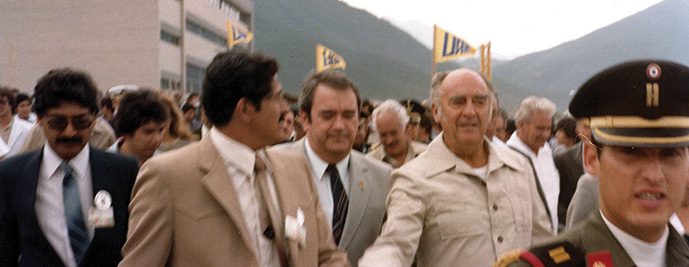
Linares and Mederos Campus
During the administration of Alfredo Piñeyro Lopez (1979-1985), the unionist movements ceased, closing a cycle of high-intensity struggle within the UANL.
Linares Campus was built within 217 acres of Hacienda de Guadalupe, as part of a large-scale project to develop and decentralize scientific education and research activities. In addition, the project to build a center in this place had as its objectives to expand the areas of knowledge with the creation of nine institutes that would be formed with different colleges.
The University established another academic complex in the southern sector of Monterrey known as Mederos Campus. It brought together schools and colleges in areas related to the social sciences, arts, and humanities: the School of Visual Arts and the School of Performing Arts both created on April 29, 1980.
The atmosphere of university stability was emphasized by Gregorio Farias Longoria (1985-1991): “The University is a harmonious system of differences that is maintained in balance based on respect among its components. Political, cultural, and social interests, as well as groups and individuals, are present and valid to the extent that they adapt to the established norms”.
One of the most significant changes in the Institution took place in the mid-1980s when the development of informatics led to more intensive use of microcomputers in the different departments, including the beginning of automation systems in administrative, academic, and research processes. Students received training in their use, until a change was made to the study plans to incorporate two subjects of introduction to computing in the third and fourth semesters. Professors were also trained in the use of this tool as a support to teaching and research. New spaces were built and equipped with computer laboratory and the Computer Services Center was built next to Capilla Alfonsina.
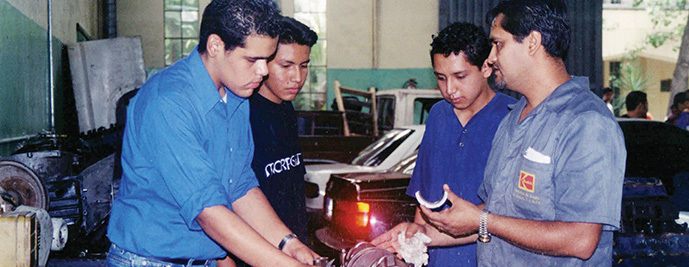
Education reform
In December 1991, the Maximum academic institution aimed at reaching academic excellence in order to increase the quality of the graduates at all levels. Under the leadership of Manuel Silos (1991-1996) an education reform was included in our school programs. This proposed a series of adjustments to high school curriculum, with a clear idea of improving content in the areas of Spanish and Mathematics.
As a result, the education reform which was to be completed in July 1995, significantly increased the terminal efficiency of its students from 51 to 73 percent.
In a broad sense, UANL experienced a marked development in all areas: the curricula was revised, the equipment of workshops and laboratories modernized, and language centers multiplied.
Emerging technology of internet simplified academic and administrative procedures online. The fiber optic network for digital telephone communication and data transmission, supported research and cultural tasks. In November 1994, the University Library “Raul Rangel Frias” was inaugurated, with all the advantages of the digital world.
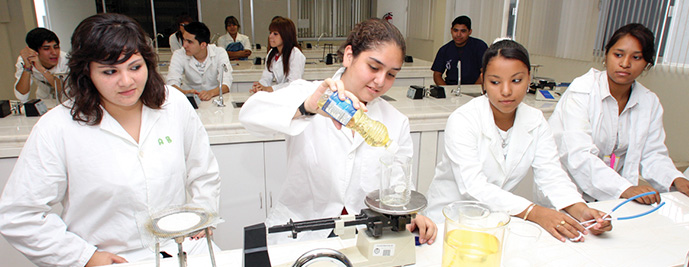
Institutional plans
During Rogelio G. Garza Rivera (2015-2021) administration, UANL is now recognized by national and international organizations among the best from a global approach. This was achieved by establishing work schemes, promoting academic exchange and cooperation with social and productive sectors.
The creation and restructuring of educational programs were encouraged to favor mobility and academic exchange, as well as double degrees with prestigious foreign institutions, promoting inclusion and intercultural awareness.
UANL also expanded opportunities for access to a greater number of young people who wish to study at the University, reaching for the first time the number of registered students at the beginning of August-December 2018. This was partly the result of making education more accessible, such as the use of new technologies.
UANL 4.0 a new initiative which, in addition to training Human Resources with digital skills, promoted research and innovation within the framework of this technological revolution. To this end, programs were adapted and created to train human capital with 4.0 skills under the triple helix model: government-business-academy.
Some efforts were made for reducing water and electricity consumption. Sustainability criteria was established with the construction and remodeling of buildings to determine the efficiency of cooling and lighting systems. An institutional policy was implemented to reduce the environmental impact generated by their daily activities and to ensure transparency and accountability in their management and academic activities.
In this way, UANL is a socially responsible, plural, and inclusive world-class institution and a learning community open to change, innovation, and collaboration.
1857
November 4th.
Governor Santiago Vidaurri issued the Decree 13 that authorizes the establishment of Colegio Civil as a public institution.
1860
May 1st.
Jose Eleuterio Gonzalez established the Civil Hospital in downtown Monterrey.
1932
July 3rd.
Raul Rangel, Juan Manuel Elizondo, and Jose Alvarado asked the National Student Organization at its 4th Convention for the foundation of Universidad del Norte in Monterrey.
1933
May 31st.
The 44th Congress of Nuevo Leon issued the first Organic Law of Universidad de Nuevo Leon.
1933
September 25th.
Universidad de Nuevo Leon was established and started its academic activities.
1933
October 4th.
The first University Senate was formed with Pedro de Alba as chair.
1933
December 16th.
Hector Gonzalez was named President by the University Senate.
1939
July 29th.
The Superior Council for Culture launched the learning service program by sending the first student brigade to remote municipalities of Nuevo Leon.
1942
July 27th.
Universidad de Nuevo Leon participated in the first National University Games in Mexico City.
1948
December 3rd.
The University Senate approved the shield and motto of Universidad Autonoma de Nuevo Leon created by Enrique C. Livas and Joaquin A. Mora.
1954
May 10th.
The University Patronage conducted the first Siembra Cultural Raffle to raise money for the construction of the Main Campus.
1958
June 5th.
The University Bookstore was opened in downtown Monterrey.
1958
November 20th.
The first stage of the Main Campus Project was completed.
1961
April 7th.
The first Alfonso Reyes medal was awarded.
1961
September 8th.
Mexico’s President Adolfo Lopez Mateos, Governor Raul Rangel Frias, and the University President Joaquin A. Mora inaugurated the Central Administration Tower.
1962
February 10th.
The Chico Rivera Stadium was inaugurated with the kickoff game of the intermediate football league.
1967
May 30th.
The University Stadium was inaugurated with a match between the Monterrey and Atletico de Madrid soccer teams.
1969
November 26th.
Universidad de Nuevo Leon became self-governing by means of the Decree 146, giving the authority to the University Senate and the Board of Trustees to designate the presidents and deans of the university, respectively.
1969
December 10th.
Oliverio Tijerina Torres became the first university president elected by vote of the University Senate.
1971
July 13th.
The first Board of Governors was formed with eleven members.
1974
November 1st.
Autenticos Tigres won their first major league championship after defeating UNAM’s Condores at the Insurgentes stadium.
1978
August 30th.
The word “Autonomous” was included in the shield of the university.
1979
February 24th.
The football stadium’s name changed to Gaspar Mass Stadium.
1980
November 13th.
Mexico’s President Jose Lopez Portillo inaugurated the Raul Rangel Frias University Library.
1981
March 23rd.
UANL created the Research Award with the categories of health, engineering, architecture, agriculture, humanities, and social sciences.
1981
September 24th.
The Linares Campus opened at the Hacienda de Guadalupe.
1982
October 29th.
Mexico’s President Jose Lopez Portillo inaugurated the Mederos Campus.
1988
June 15th.
The University Senate approved the UANL Arts Award to promote auditory, body, visual, and literary arts.
1988
July 11th.
The Department of Student Records started using computers for freshman procedures.
1990
June 15th.
UANL’s Channel 53 began transmissions at the School of Mechanical and Electrical Engineering.
1991
May 7th.
The University Theater opened at the Mederos Campus.
1994
November 29th.
Mexico’s President Carlos Salinas inaugurated the Raul Rangel Frias University Library.
1996
May 31st.
The External Advisory Board was established to be the link between the university and the different sectors of the state.
1996
June 12th.
UANL signed a contract to transfer its rights to the Tigres Club to Sinergia Deportiva.
1999
September 24th.
Mexico’s President Ernesto Zedillo conducted the swearing-in ceremony of the member of the UANL Foundation.
2001
September 19th.
After renovation works, the Central Administration Tower was inaugurated by Mexico’s President Vicente Fox Quesada.
2003
October 25th.
The UANL Foundation conducted their first Siembra Cultural Raffle.
2004
June 23rd.
The University Senate approved the official UANL anthem.
2005
July 16th.
The Sabinas Hidalgo Campus began operations.
2008
April 11th.
The University Aquatic Olympic Center was inaugurated.
2008
September 4th.
The Agricultural Sciences Campus was opened.
2011
May 23rd.
UANL’s first International Book Fair was held as part of the Alfonsino Festival.
2012
January 27th.
UANL became the first institution to receive the Educational Quality Award by the Ministry of Public Education for three consecutive years.
2013
October 23rd.
The House of Representatives acknowledged UANL for its contributions to the academic, research, and technological development of Mexico.
2014
November 26th.
The free online course platform Alere was launched.
2014
November 27th.
UANL received the Management Improvement Award by the Ministry of Public Education.
2016
March 8th.
The University Hospital carried out an autologous stem cell transplant on a type 1 diabetes patient.
2017
July 4th.
UANL issued the first degree certificate with a gender identity change.
2018
July 16th.
UANL received the Ecological Achievement Award by the Ministry of Environment and Natural Resources.
2019
March 13th.
The Protocol for Sexual Harassment was approved together with the reestablishment of the Gender Equality Committee.
2019
June 18th.
Supported by its World Trade Center, UANL became the first educational institution to receive the Rodolfo Gonzalez Garza Export Achievement Award by the Council of International Trade of Northeastern Mexico.
